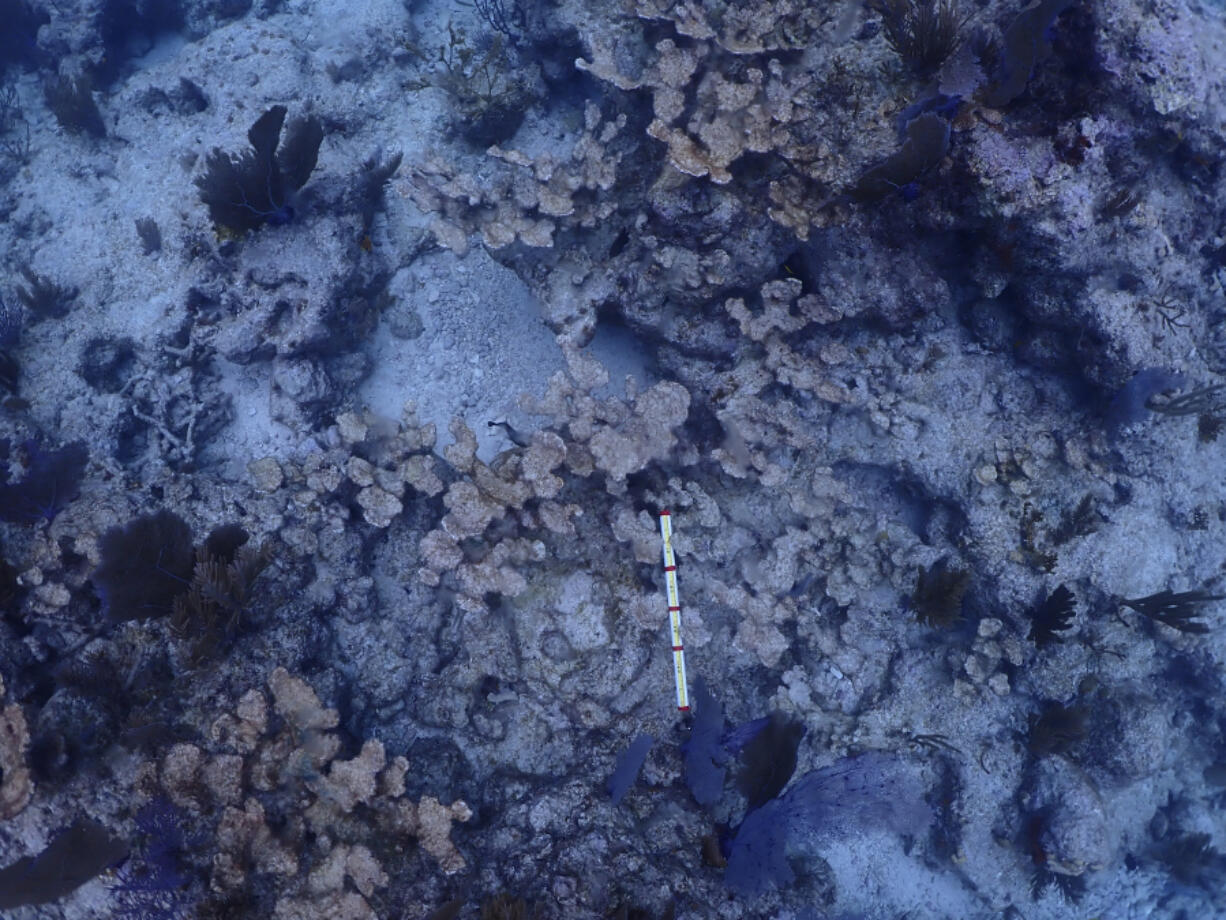Record hot seawater killed more than three-quarters of human-cultivated coral that scientists had placed in the Florida Keys in recent years in an effort to prop up a threatened species that’s highly vulnerable to climate change, researchers discovered.
Researchers from the National Oceanic and Atmospheric Administration this week returned to five reefs where they planted staghorn and elkhorn coral, both classified as threatened in the endangered species list, to see how the repopulated critters had survived prolonged water temperatures in the 90s last summer and fall. Most of them didn’t. They saw widespread death in both repopulated and wild coral on five Florida Keys reefs.
Scientists blame human-caused climate change, with a boost from a natural El Nino, for making the water too hot for the delicate coral, which are animals, to survive. After trying to rescue coral during heat last summer, this was scientists’ first winter look to see what survived.
Only 22 percent of the 1,500 repopulated staghorn coral that they surveyed was alive, NOAA said. Only about 5 percent of 1,000 replanted elkhorn corals were alive. At Looe Key, the southernmost of the reefs they looked at, “we did not find any live elkhorn or staghorn coral, not wild, not planted,” said coral biologist Katey Lesneski, monitoring coordinator for NOAA’s Mission: Iconic Reefs.
“It’s really horrible to witness,” Lesneski said in an interview just two days after the dives finished. “Besides thinking about the economic and the ecological benefits reefs and these corals provide, there’s the loss of intrinsic beauty that many people come to the Keys to see and experience. And just to take in the loss of that is also very upsetting.”
“There’s still a lot of data to be collected to really understand the full impact,” Lesneski said. “But we certainly have not seen something like this in recorded human history.”
Normally these are corals with robust red, orange, tan and brown colors. But what Lesneski and other researchers saw when they dove were dead coral with brownish green algae settled on the lifeless skeleton to make it look “quite drab,” she said.
Not only are staghorn and elkhorn populations dwindling so much that they are on the endangered list, but they are crucial to the vast community of different types of coral because they are framework builders that provide the “structural framework” for coral habitat, Lesneski said.
Even though the researchers were diving to check up on the human-planted coral at Horseshoe Reef, the second northernmost reef they looked at, an area Lesneski gazed at was once a wild colony of elkhorn coral that was more than 100 years old.
“I saw them in June and they were alive. In July, they were starting to die because of the heat stress,” Lesneski said. “And at this point we have not even found a patch of living tissue on any of those wild colonies at Horseshoe Reef. So that was very hard to see.”
In the five reefs the team visited, they did see some wild coral alive and well, Lesneski said. Brain or boulder coral seemed to do better, but still had large amounts of death, she said.
The joint federal-private project plans to spend at least $97 million to place coral species grown on land or in ocean nurseries across seven sites. Some of the species are the same as what was already in the water and had been badly hurt by warmer seas, but some had been crossbred to be heartier, Lesneski said. It’s too early to tell whether the heartier coral survived more, she said.



